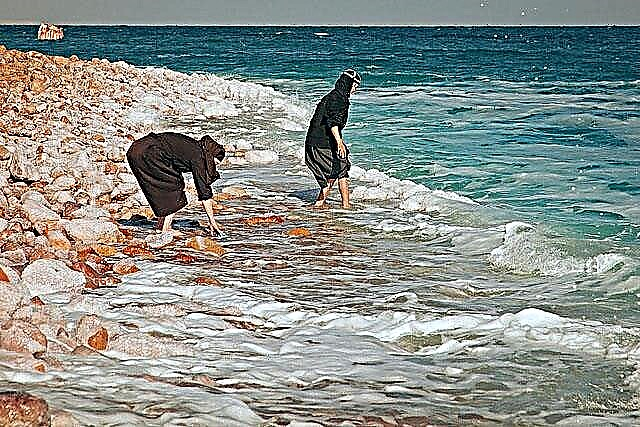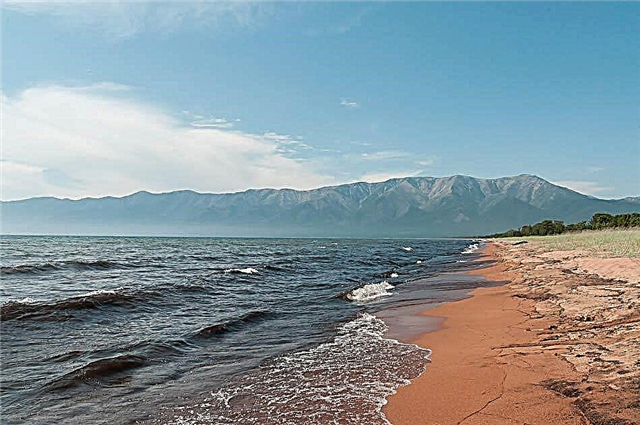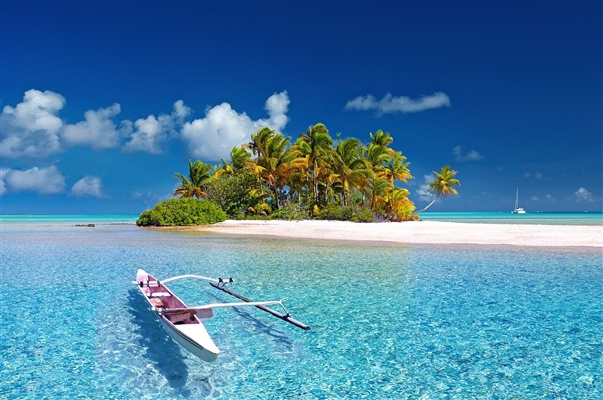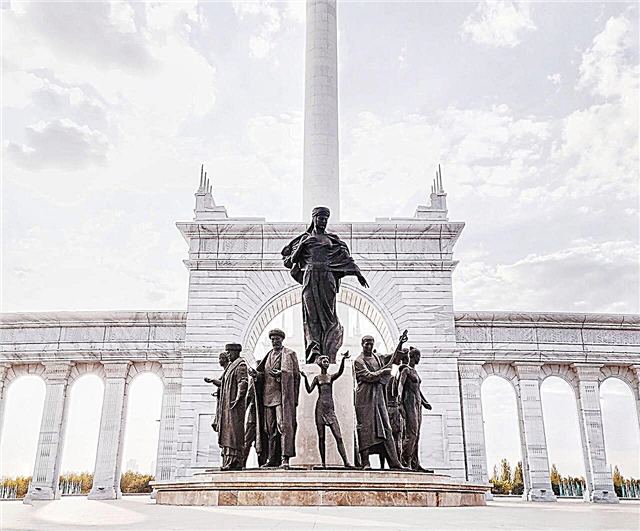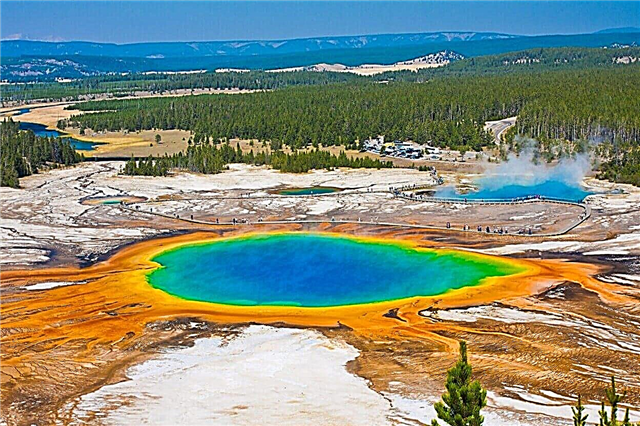National parks in the United States are often combined with protected and protected areas. In such cases, the territory is divided into sectors, so as not to harm nature and allow tourists to spend time here. This approach allows maintaining another part of the park at the expense of one part of the park, while educating travelers. The rules of conduct in protected areas are fundamentally different from those in Russia. In the reserves of Russia, for example, all activities are prohibited; in the USA, in the reserves, you can go in for sport hunting.
But in national parks, the opposite is true. Reserves are needed to preserve unique types of terrain, as well as rare species. Tourism and related infrastructure is widely developed, but there are exceptions. Usually these include especially remote corners or those that are on the islands. The nature in America is very different depending on the state.
The most famous nature reserves in America
Yellowstone
It is the oldest national park in the world - 1872. Its area of 898 thousand hectares is distributed in three states: Montana, Wyoming, Idaho. Subsequently, it received the status of a biosphere reserve and became a UNESCO World Heritage Site. Attractions: Yellowstone Caldera, half of all geysers on the planet, including Old Faithful, numerous hot springs, for example, Emerald.

Olympic
Located on 373 thousand hectares in the state of Washington. Founded in 1938 as a US National Park, but later became a Biosphere Reserve and a UNESCO World Heritage Site. Since it is located on the peninsula and has been little influenced, unique ecosystems have formed here. Features: rain forests, alpine meadows, glaciers and more. Open to tourists from July to September.

Mammoth cave
Refers not only to national parks, but also to biosphere reserves, as well as UNESCO World Heritage Sites. Founded in 1941 on an area of 21 thousand hectares in Kentucky. Named after the longest cave system on the planet. It is karst by its type, has a length of 627 km and a depth of 115 m. There are cave rivers and lakes. Sightseeing tours vary in the length and complexity of the route.

Hawaiian volcanoes
The national park covers an area of 130 thousand hectares. Located in the state of Hawaii since 1916. Awarded the status of a biosphere reserve and a UNESCO World Heritage Site. The territory is a volcanic Kau desert, where volcanoes of varying degrees of activity are ubiquitous. For example, Kilauea erupts continuously and slowly. Access to the park is sometimes blocked if it becomes unsafe to visit.

Great Smoky Mountains
National Park, part of a biosphere reserve and a UNESCO World Heritage Site. It was formed in 1934 on an area of 210 thousand hectares in North Carolina and Tennessee. The Appalachian Trail, the longest walking trail on the planet, runs through it. Sightseeing: Cherokee reservation, observation deck at the highest point of the park, waterfalls. You can play golf, ride an electric car, arrange a horse ride.

Glacier Bay
The national park, which is part of the biosphere reserve, was founded in 1980. Included in the UNESCO World Heritage List. Located in Alaska, occupying most of the state's coastline. Attractions: Icebergs and glaciers including Lampluff and Margery. Tourists are offered regular cruises. Leisure is also varied: fishing, catamaran walks, rock climbing, rafting and more.

Glacier
Located in Montana on an area of 410 thousand hectares. Founded in 1910 as a national park, 66 years later it was recognized as a biosphere reserve, and in 1995 - a UNESCO World Heritage Site. The main tourist season is in the summer, the rest of the time there are restrictions. There are walking, water and car routes, the latter includes the "Valley of the Sun": it lasts two hours and allows you to explore the main beauty of the park.

Everglades
The time of the actual formation of the national park in Florida is 1947. Included in the UNESCO World Heritage List and in the number of biosphere reserves. The area is 610 thousand hectares. The land is cut by swamps, rivers, canals, lakes and streams. The thickets of grass reach the height of human growth. The only place in the world where alligators and crocodiles coexist. Orchids stand out among the plants, of which there are more than 25 species.

Sequoia
The national park was founded in 1890 on an area of 163 thousand hectares in California. It also has the status of a biosphere reserve. Part of the way can be traveled by car. The local museum has an elevation scale showing what giant sequoias are comparable to. For example, they are taller than the Statue of Liberty. In addition to souvenirs, the shops sell tree sprouts. Picnic spots, campgrounds and parking are found throughout the park.

Rocky mountain
Two in one: a national park and a nature reserve. Location - Colorado, founded in 1915, area - 107 thousand hectares. One of the features is the continental divide. The most beautiful lakes: Spraig, Bear, Nymph. The latter is covered with water lilies. The eastern part of the park is much drier than the western one. When planning a visit, you need to choose the time carefully, as there are frequent rain showers.

Kings Canyon
The area of the national park located in California is 186 thousand hectares. It borders on the Sequoia Park, and is also a biosphere reserve. Founded in 1940. The valley and its surroundings received their present appearance due to ancient earthquakes. Points of interest: Panorama Point, Zumwalt Glade, Screaming River with a waterfall, Grant's Grove, Lake Hume. You can stay in one of the lodges or in the campsite.

Joshua Three
The National Park and Biosphere Reserve covers an area of 319 thousand hectares in California. Appeared on maps in 1994. The terrain is partly deserted, partly covered with rock formations. Sightseeing: The Barker Dam is something like an oasis, on the huge boulders of which you can see petroglyphs, the Hall of Horrors - a site popular with rock climbers, Skala-Skull, so named because of its shape.

Isle Royal
Occupies 231 thousand hectares of the Michigan area. It became a national park in 1940 and a biosphere reserve in 1980. The island location favorably affected the safety of plant and animal species. Numerous lighthouses help to navigate among the small islets. You can get here by canoe or ferry. The populations of moose and wolves are monitored especially closely here, taking into account each individual.

Haleakala
The National Park and Biosphere Reserve belongs to the territory of the state of Hawaii. Since 1961, it gained independence, separating from the neighboring park. The area is about 12 thousand hectares of the island of Maui. According to legend, the demigod of the same name hid the sun here, wanting to lengthen the day. The main attraction is the Haleakala volcano, which died out more than 200 years ago. There is an observatory conducting research activities.

Dry-Tortugas
It has existed since 1935 in the form of a national park, and it became a biosphere reserve even earlier. Located on the archipelago and coral reefs off the coast of Florida. The area is 26 thousand hectares. Attraction - Fort Jefferson, built in the middle of the 19th century. It has not been used for its intended purpose for a long time and has turned into a tourist and historical site. Key West Resort is nearby.

Denali
Covers an area of approximately 2.5 million hectares in central Alaska. It has existed since 1917, but has changed geographically. Point of interest: Denali is the highest mountain in North America. A special feature is the railway passing through the national park, which is not typical for protected areas.The flora also includes Asian species, since in the distant past the continents were connected by an isthmus.

Death Valley
Most of the national park and biosphere reserve is located in California, the rest is in Nevada. Founded in 1994, the area is 1.3 million hectares. The driest of the US parks, with a temperature record of + 56.7 ° C. One of the interesting phenomena is the movement of boulders, leaving a trail on the cracked ground. Places of interest: Devil's Hole, Ubheb Crater, Desert of Flowers.

Congari
The national park, also recognized as a biosphere reserve, was founded in 2003. Located in North Carolina, near the state capital. The area is swampy, wooden platforms are laid everywhere for the convenience of tourists. You can also explore the beauty of the park from a canoe or boat. The relict dark coniferous forests are a unique natural object that is no longer found in the area.

Channel Islands
The national park and biosphere reserve in California is located on an area of 101 thousand hectares. Founded in 1980, although these lands were protected to varying degrees in the past. It includes the coastal waters of the state and the island. At the same time, Santa Cruz is only a quarter given over to the park. The main tourist flow is in summer, in other seasons people come here to watch migrating whales or go diving.

Big Bend
The location of the national park and biosphere reserve is the border with Mexico, Texas. It has existed since 1944 and covers an area of 324 thousand hectares. A desert climate, cracked ground, cacti as the main vegetation are typical features of the park. Popular activities include hiking, rock climbing, and bird watching. You can also cross the Rio Grande and find yourself in a Mexican village.
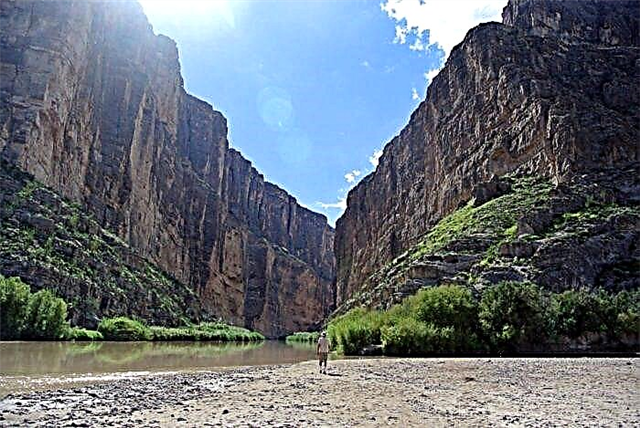
Aniakchak
A national monument and preserve was founded in 1978 in Alaska. The area is 243 thousand hectares. Named after an active volcano that has an impressive caldera diameter. The territory is divided into zones with different statuses: for example, in some sports hunting is allowed, in others it is not. Depending on the weather conditions, the leisure of tourists also changes: rafting, fishing, rock climbing, seaplane flights.

Bering Land Bridge
An area of 1 million hectares of Alaska was recognized as a national reserve in 1978. It includes the Seward Peninsula, as well as the islands around. Researchers suggest that in the distant past there was an isthmus connecting North America with Asia. The terrain is heterogeneous: next to the tundra and swamps, solidified lava areas, lakes, meadows and hot springs coexist.

Big Cypress
It acquired the status of a national reserve in 1974. Located in Florida, covering 295 thousand hectares. Bordered by the Everglades Park. Hunting is prohibited in some areas, in others, on the contrary, it is a tourist destination. The area is marshy, which is suitable for breeding alligators. There are also very rare species of animals, such as the Florida cougar. Perhaps an independent trip around the reserve (it is free), or with a guide.

Lunar craters
The name of this national monument and preserve in Idaho is derived from the magma traps that look like lunar craters. It has its current status since 1924, with an area of 289 thousand hectares. Sightseeing: Lava field, along which a hiking route is laid, Devil's Garden - the place where plants made their way through solid soil, a volcanic cone towering over the valley.

Gates of the Arctic
The translation of the name of this national park and reserve is “the gates of the Arctic”. Occupies an area of 3.4 million hectares in Alaska. It has been in its current position since 1980. The designated wilderness area here is one of the largest in the United States. The population of bears is recorded up to the count of each individual. There are no roads or tourist infrastructure, which is the reason for the low traffic

Great Sand Dunes
The National Park and Preserve was founded in Colorado in 2004 and has an area of over 3.4 million hectares. The terrain is heterogeneous: sand dunes, mountain tundra, mountain peaks, mixed and coniferous forests, swamps. The Medano Creek River periodically changes course due to erosion and wind. Unusual entertainment - descending the sandy hills on special boards, they can be rented.

Katmai
Located in Alaska on an area of 1.6 million hectares. The National Park and Preserve was formed in 1980. The most curious object is the Valley of Ten Thousand Smokes. More than a hundred years ago, it was covered with ash, and the Leta River formed canyons from the cooled rock. Now there is no smoke, but the name remains. There are more than 2000 bears. They are being watched through cameras installed in the park.

Lake Clark
Congress granted its current status to the Alaska National Park and Preserve in 1980. Area - 1.6 million hectares. In part of the territory, sport hunting is allowed, and fishing is prohibited everywhere. Attractions include volcanoes, some are active, but there are no strong eruptions. Another curious natural site is Clark Lake, declared a National Monument.

Wangel St Elias
It is currently a national park and nature reserve. Location - Alaska, appeared in 1980, an area of 5.3 million hectares, which makes it the largest in the United States. There are hot springs near volcanoes, including mud. A road passes through the park, and there are camping grounds near it. In the past, minerals were mined here, now almost nothing reminds of this. UNESCO site.

Noatak
It has existed since 1978, but later the status of a national reserve was added. Spread over 2.6 million hectares in Alaska. Animals and plants are characteristic of the taiga and tundra. The location in the Arctic Circle affects the peculiarities of the climate, for example, in summer, at temperatures above +20 ° C, it can snow sharply. Among the activities of the park: sport hunting and descent along the rapids, but rather calm river.


